What are the 7 types of Plastics?
Several types of plastics worldwide have different properties, chemical structures, and applications. Some of them are recyclable, and some of them are not. Just look around you, and you’ll realize almost everything you see is wholly or partly made from plastic.
Let’s dive into the 7 types of plastic dominant in the plastic processing industry without further ado.
- Polyethylene Terephthalate (PET or PETE or Polyester)
- High-Density Polyethylene (HDPE)
- Polyvinyl Chloride (PVC – U)
- Low-Density Polyethylene (LDPE)
- Polypropylene (PP)
- Polystyrene (PS)
- Others
Polyethylene Terephthalate (PET or PETE or Polyester)
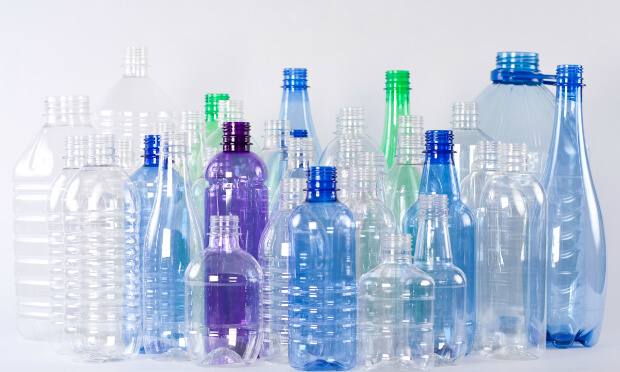
Source - packagingnews.co.uk
PET, also known as polyester, is a semi-crystalline and colorless plastic material with excellent chemical, mechanical, thermal resistance, and dimensional stability properties. It is also called wrinkle-free fiber and is mainly utilized in the textile and food packaging industries.
It has an impressive strength-to-weight ratio, good water resistance, and shatterproof valuable properties. In addition, it is recyclable and comes with the number “1” as a recycling symbol.
It is one of the most popular thermoplastics in the world, with an annual production of 56 metric tons. The textile industry is the biggest consumer, with 60 productions, and the second-largest consumer is the packaging and bottling industry, with 30% consumption.
The thermoplastic may also contain antimony trioxide, a carcinogen capable of causing cancer in living human tissue. The longer it is kept in warm-temperature situations like inside cars, garages, and enclosed garages, the more the chances of releasing the hazardous matter.
| Property | Description |
| Chemical Name |
Polyethylene Terephthalate
|
| Abbreviation | PET |
| Density | 1.38 g/cm³ |
| Melting Point |
250-260°C (482-500°F)
|
| Glass Transition Temperature |
70-80°C (158-176°F)
|
| Tensile Strength |
50-80 MPa (7,250-11,600 psi)
|
| Flexural Modulus |
2000-3000 MPa (290,000-435,000 psi)
|
| Elongation at Break | 50-150% |
| Impact Strength |
Low to moderate
|
| Transparency | Clear to opaque |
| UV Resistance |
Poor, susceptible to UV degradation
|
| Water Absorption | Low (< 0.5%) |
| Chemical Resistance |
Good resistance to most chemicals, except strong acids and bases
|
| Flammability |
Combustible but self-extinguishing
|
| Biodegradability |
Not biodegradable
|
| Recyclability |
Widely recycled (Recycling symbol #1)
|
High-Density Polyethylene (HDPE)
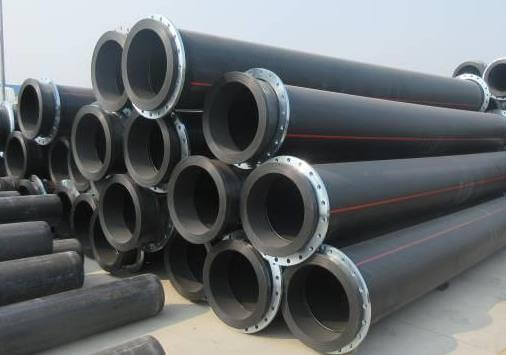
Source - vlmaritime.com
HDPE is a more robust and thicker plastic than PET, thanks to its long, virtually unbranched polymer chains. It is known for its excellent tensile strength, low cost, high melting point, and good impact strength.
Typically available in rod and sheet forms, it is effortless to fabricate using standard and traditional thermoplastic welding equipment.
Excellent machinability makes HDPE ideal for producing larger products like water and chemical tanks and smaller, mainstream products like milk jugs, plastic bottles, juice containers, shampoo bottles, medicine bottles, beach bottles, cutting board pipings, grocery bags, etc.
It is recyclable, relatively stable than PET, and has FDA compliance for food and medicinal applications. Recycling HDPE can save up to 50% of material cost, and you shouldn’t worry about the quality as it would be an excellent virgin material.
A high melting point of 210 to 270°C and corrosion resistance make it more suitable for consumer goods and packaging applications.
| Property | Description |
| Chemical Name |
High-Density Polyethylene
|
| Abbreviation | HDPE |
| Density | 0.93-0.97 g/cm³ |
| Melting Point |
120-180°C (248-356°F)
|
| Glass Transition Temperature |
-110 to -100°C (-166 to -148°F)
|
| Tensile Strength |
20-40 MPa (2,900-5,800 psi)
|
| Flexural Modulus |
1000-1500 MPa (145,000-217,000 psi)
|
| Elongation at Break | 100-700% |
| Impact Strength | High |
| Transparency | Opaque |
| UV Resistance |
Good, especially when stabilized
|
| Water Absorption |
Deficient (< 0.01%)
|
| Chemical Resistance |
Excellent resistance to most chemicals, including acids, bases, and solvents
|
| Flammability |
Combustible but self-extinguishing
|
| Biodegradability |
Not biodegradable
|
| Recyclability |
Widely recycled (Recycling symbol #2)
|
Interesting Read – How is Plastic Made? A Simple and Detailed Explanation.
Polyvinyl Chloride (PVC – U)
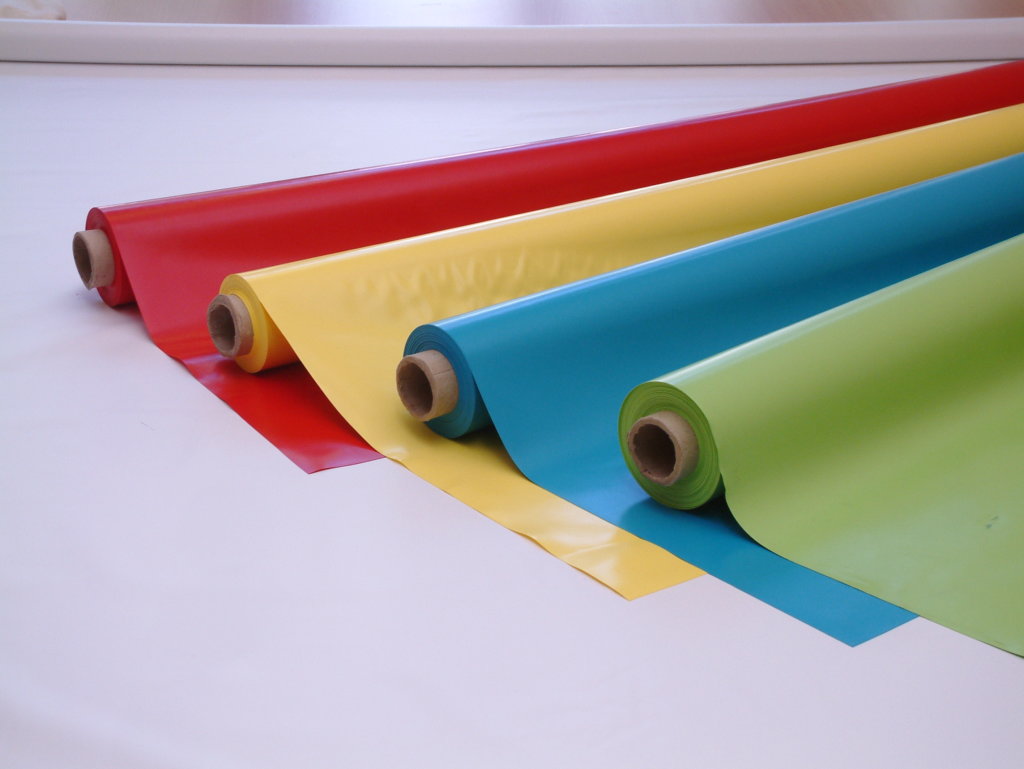
PVC Sheets, Source - chemseed.com
PVC is a type of plastic known for its versatility and economic value, widely used in the construction and building industry for making pipes. The common PVC applications include doors, windows, wires, cable insulation, pipes & fittings. Applications from other industries include blister wrap, cling wrap, detergent bottles, toys, and medical tubing.
It is white, brittle, and available in powder and granule form. PVC is quickly replacing traditional materials like wood, metal, steel, concrete, rubber, and ceramics in many applications, thanks to many excellent properties such as durability, low cost, lightweight, and easy processability.
Polyvinyl chloride has a very controversial image regarding toxicity, as it is considered one of the world’s most toxic and hazardous plastics.
Its prolonged use may lead to the leaching of various chemicals like bisphenol A (BPA), leads, cadmium, phthalates, mercury, and dioxins.
Apart from that, it’s sporadic to see PVC being recycled (depending on your locality).
So, from an environmental standpoint, avoiding PVC is the best choice. Even though it is hazardous to the environment, there’s no visible harm to its popularity.
| Property | Description |
| Chemical Name |
Polyvinyl Chloride
|
| Abbreviation | PVC |
| Density | 1.35-1.45 g/cm³ |
| Melting Point |
100-260°C (212-500°F)
|
| Glass Transition Temperature |
80-85°C (176-185°F)
|
| Tensile Strength |
40-60 MPa (5,800-8,700 psi)
|
| Flexural Modulus |
2400-3000 MPa (348,000-435,000 psi)
|
| Elongation at Break | 20-300% |
| Impact Strength | Moderate |
| Transparency | Clear to opaque |
| UV Resistance |
Poor, susceptible to UV degradation unless stabilized
|
| Water Absorption | Low (< 0.5%) |
| Chemical Resistance |
Good resistance to most chemicals, except ketones, chlorinated hydrocarbons, and some aromatics
|
| Flammability |
Combustible, it can generate toxic fumes when burned
|
| Biodegradability |
Not biodegradable
|
| Recyclability |
Widely recycled (Recycling symbol #3)
|
Low-Density Polyethylene (LDPE)
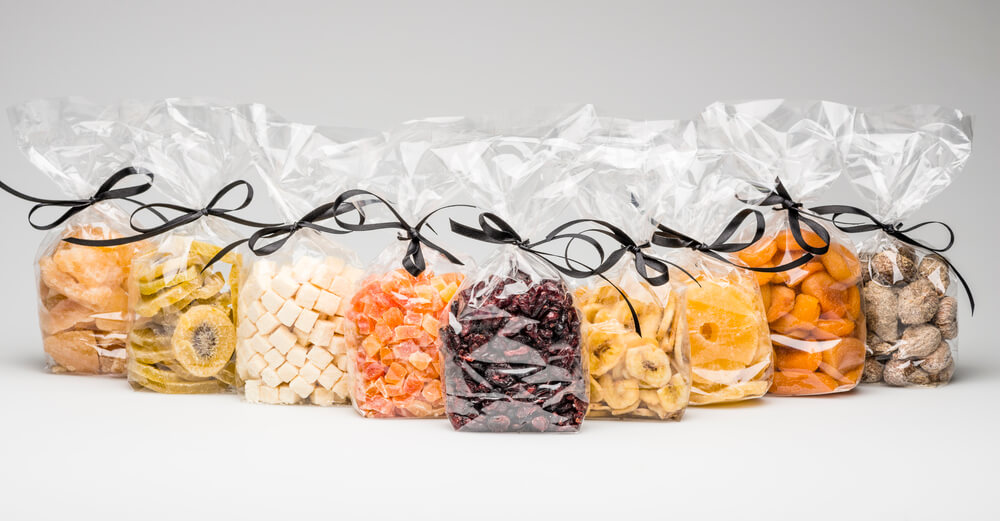
LDPE food packaging, Source - xlplastics.com
LDPE comes from the same polyurethanes family as HDPE. It is tough, lightweight, soft, and flexible. The thermoplastic boasts good chemical properties, impact strength, low-temperature compatibility, and corrosion resistance.
It has a relatively simple chemical structure (the main reason for its low density). It is primarily used in applications requiring stiffness and structural strength.
Common applications include pharmaceutical packaging, liners, trash bags, food packaging films, laminations, flexible and lightweight toys, housewares, water pipes, hoses, cable jacketing & coatings, and sub-consumer insulators.
The plastic recycling code for LDPE is #4. It does not contain BPA but is suspectable of leaching estrogenic chemicals.
Recycling with this plastic is not as common as other thermoplastics. But there is no rock-solid proof of LDPE hurting the human body in any way.
It can be quickly processed in injection molding and extrusion.
| Property | Description |
| Chemical Name |
Low-Density Polyethylene
|
| Abbreviation | LDPE |
| Density |
0.910-0.940 g/cm³
|
| Melting Point |
105-115°C (221-239°F)
|
| Glass Transition Temperature | -125°C (-193°F) |
| Tensile Strength |
10-25 MPa (1,450-3,600 psi)
|
| Flexural Modulus |
250-350 MPa (36,000-50,000 psi)
|
| Elongation at Break | 100-800% |
| Impact Strength | High |
| Transparency |
Transparent to translucent
|
| UV Resistance |
Poor, susceptible to UV degradation unless stabilized
|
| Water Absorption |
Very low (< 0.01%)
|
| Chemical Resistance |
Excellent resistance to most chemicals, including acids, bases, and solvents
|
| Flammability |
Combustible but self-extinguishing
|
| Biodegradability |
Not biodegradable
|
| Recyclability |
Widely recycled (Recycling symbol #4)
|
Polypropylene (PP)
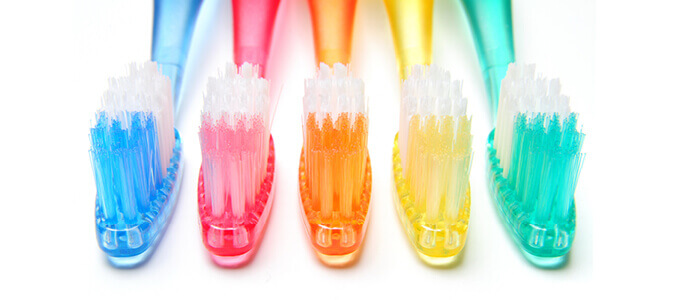
Source - durochem.com
Polypropylene is a stiff, tough, rigid, and heat-resistant thermoplastic material. It is the most utilized thermoplastic on the planet, with an estimated USD 78.22 Billion market size in 2019.
Salient features include water resistance, fatigue resistance, high electrical resistance, low cost, and high recyclability. The main applications include automotive parts like Fender lines, door trims, battery cases, trays, boxes, etc. Medical applications are food trays, specimen bottles, pill containers, medical vials, etc. Industrial applications include tanks, sheets, pipes, packaging, etc.
It is considered safe for food and beverage applications and is easily processible in injection molding and extrusion.
Below are the typical properties of polypropylene:
| Property | Value |
| Impact Strength |
2 – 6 kJ/m2 at 20 °C
|
| Density |
1.04 – 1.06 g/cm3
|
| Melting Temp | 160-168°C |
| Elastic Modulus | 1.5 – 3 GPa |
| Thermal Conductivity |
0.41 W/(m.K) at 20 °C
|
| Flammability | UL 94 HB |
| Electrical Resistance |
1*1013 – 1*1014 Ω.m at 20 °C
|
| Dielectric constant | 2.8 at 20 °C |
| Specific heat capacity |
1520 J/(kg.K) at 20 °C
|
| Max. service temperature (short) | 140°C |
| Coefficient of thermal expansion |
6*10-5 – 1*10-4 1/K at 20 °C
|
Polystyrene (PS)
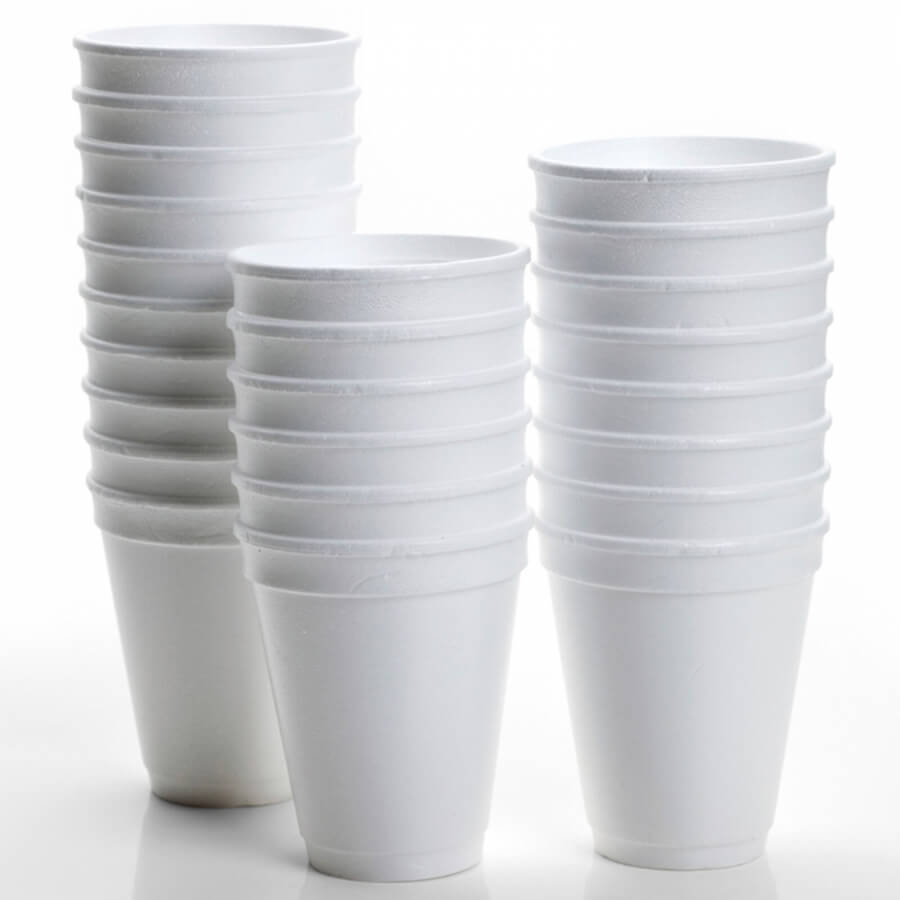
Source - jamaicatimesja.com
Polystyrene is a naturally transparent and synthetic thermoplastic material extracted from styrene monomer. It is mainly available in sheet and foam forms. Expanded Polystyrene foam is known for its extensive use in food packaging applications in foam form.
Other prominent applications include consumer appliances, containers, CDs, test tubes, smoke detectors, etc.
The firmness in the polymer’s backbone makes it suitable for packaging applications. Even if the number and versatility of applications are impressive, the recycling rate of PS is low, which can discourage manufacturers.
Below is a table with typical properties of polystyrene:
| Property | Value |
| Tensile Strength |
53 MPa (7700 PSI)
|
| Melt Temperature |
210-249 °C (410-480 °F)
|
| Heat Deflection Temperature (HDT) |
95 °C (284 °F) at 0.46 MPa (66 PSI)
|
| Specific Gravity | 1.04 |
| Flexural Strength |
83 MPa (12000 PSI)
|
| Typical Injection Molding Temperature |
38 – 66 °C (100 – 150 °F)
|
| Molecular Weight of Repeat unit | 104.15 g mol-1 |
| Molar Cohesive Energy |
J mol-1 34200 – 37100
|
| Density |
g mL-1 1.05 – 1.06
|
| Entanglement Molecular Weight |
g mol-1 13600 – 17500
|
| Solubility Parameter | 18.5 – 19.4 MPa |
Others
The “Others” category includes types of plastics not identified by numbers 1-6 or other plastics mixed or layered with additives to create different grades and variations, like Bioplastics.
The most notable plastic material in this category is Polycarbonate; although a mainstream plastic material with various applications in several industries, it is somewhat losing its popularity because of its affiliation with BPA.
The low-rate rate of recyclability for Polycarbonate adds more to the problem.
It is typically used for making baby bottles, after-gallon bottles, dental sealings, ketchup containers, etc.
Talking about other contenders, ABS comes to my mind, an amorphous polymer with fantastic impact resistance properties.
It is opaque and comprises three monomers: Acrylonitrile, Butadiene, and Styrene.
Salient properties include High rigidness and strength, Good abrasion resistance, Good mechanical strength with constant stability, Excellent surface brightness, and Great impact resistance even at low temperatures.
Common applications can be found in the automotive, electrical, electronics, and appliances industries.
The most prominent products are steering wheel covers, instrument panels, pillar trims, seat belt components, electrical enclosures, computer keyboards, irons, toasters, vacuum cleaners, appliance control panels, shavers, refrigerator lines, etc.
Talking about recyclability, It is relatively harmless for humans as there are no signs of carcinogens.
For additional knowledge on plastic types, you can refer to the photo below:
Source - ryedale.gov.uk
FAQs
Below are the frequently asked questions on different types of plastic. Let’s dig deep.
Which is the toughest plastic material in the world?
Polycarbonate is the toughest plastic material in the world. It is 200 times stronger than glass and is warranted against breakage or cracks. Such high impact strength makes it applicable in bulletproof glasses and structures situated in places with snow or hail so that such throws do not impact the building.
What is the lifespan of plastics?
Generally, plastic items take up to 1000 years to decompose in landfills. The plastic bags we use daily take about 10 to 2 years to decompose, whereas plastic bottles take up to 450 years.
Which is the most lightweight plastic?
LDPE is the most lightweight plastic material known for its softness and flexibility. It is also known for its temperature resistance, toughness, and corrosion resistance.
What is the oldest synthetic plastic?
Bakelite was the first synthetic plastic ever to be created and used commercially. Belgian-American chemist Leo Baekeland invented it in 1907.
Which plastic has the highest heat resistance?
There are a few plastic materials that have good heat resistance capabilities. Still, I believe the best material with the highest heat resistance and good overall properties is PTFE. It is highly flexible, thermal resistant, chemical resistant, non-stick, and electrically resistant and can also withstand harsh chemicals and acids.
Suggested Read
- Food Grade Plastic: The Best Plastics for Food Applications
- Mechanical Properties of Plastic Materials | The Definitive Guide
The Takeaway
Those were my thoughts on the 7 types of plastic we all needed to know about. These are all prevalent plastic materials with significant potential that can work effectively for you. How a manufacturer employs the plastic material is essential for attaining near-optimal production outcomes.
Numerous manufacturers encounter errors when selecting the appropriate material, leading to long-term production problems. To consistently make well-informed decisions and minimize mistakes, it is advisable to consult your material supplier regarding your production needs.
Kindly share your reviews and questions in the comment box.
Have a wonderful day.
Quick Navigation

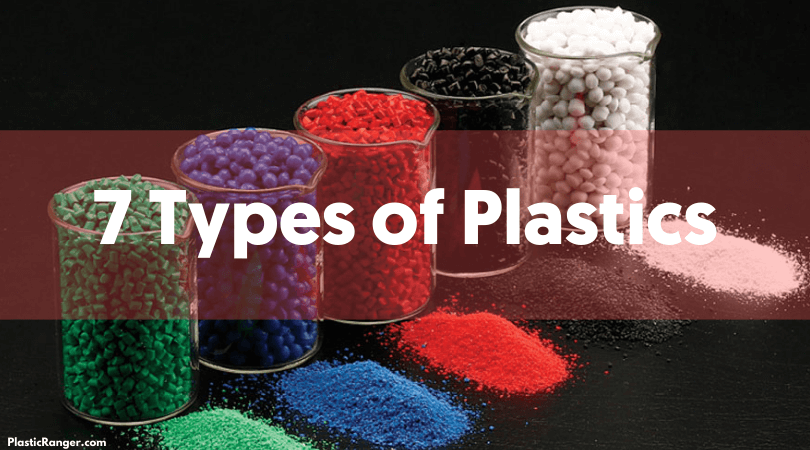

Lovely piece of information.
Thanks.
great information for a project I am starting with my grandsons recycling plastics.
Thanks